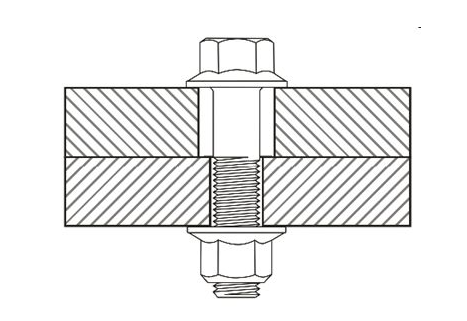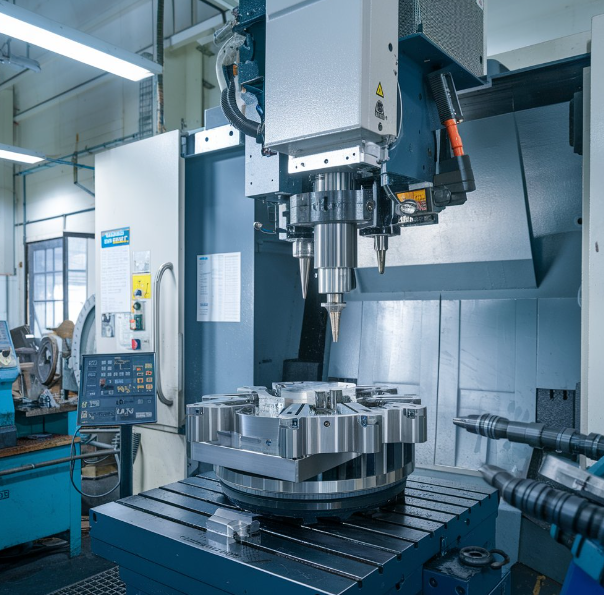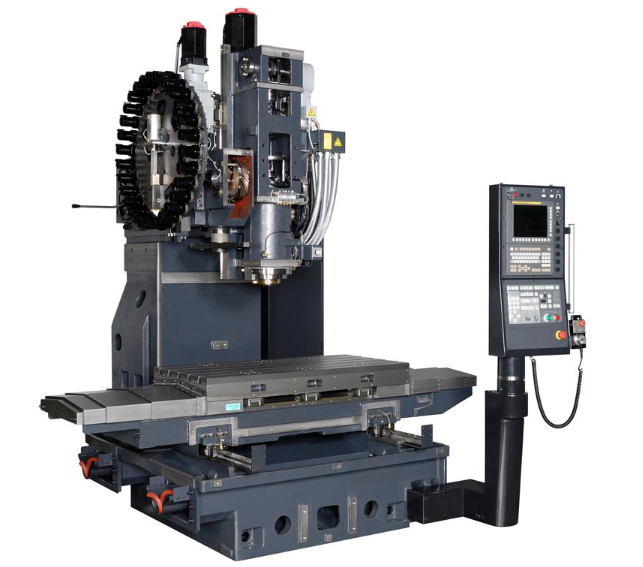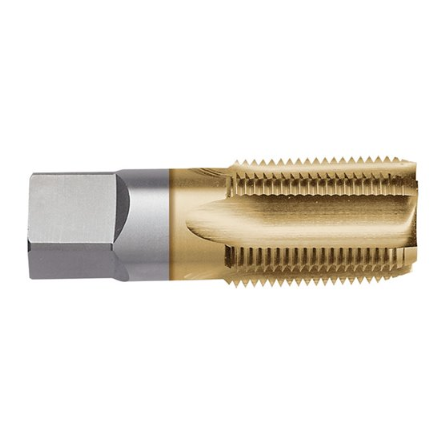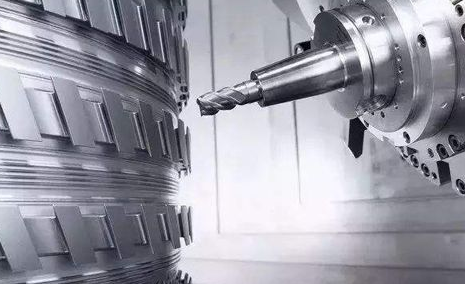With the increasing precision and sophistication of mechanical products, especially in aerospace, military, marine and high-tech industries, Computer Numerical Control machining centers are used instead of ordinary machines to meet higher requirements. As the most common machining process for CNC parts manufacturing, CNC milling services require milling machines to complete the operation. What is a CNC milling machine, and how does it work? Here CNClathing.com introduces the CNC mill definition, functions, types, main parts with diagram, and differences compared to CNC routers.
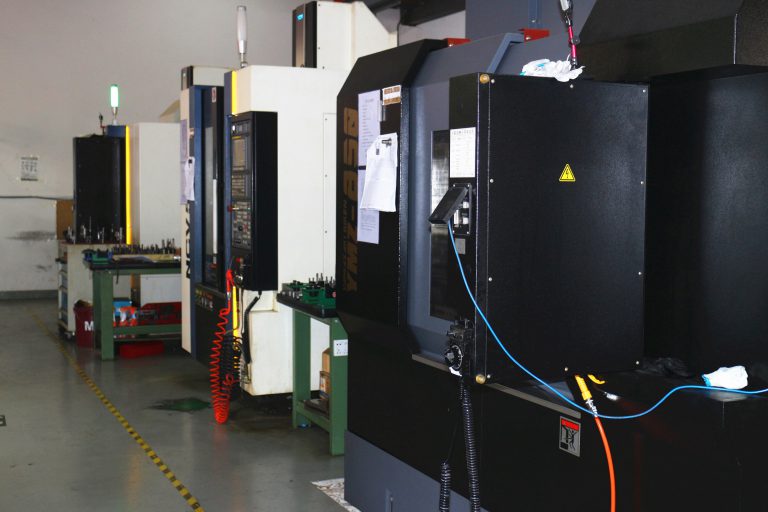
What Is a CNC Milling Machine (CNC Mill)?
A CNC (Computer Numerical Control) milling machine, or CNC mill, is a computerized controlled machine that features drilling and cutting tools for completing the milling process. Milling is a manufacturing method using a rotating cylindrical cutting tool to remove materials from the workpiece and create a wide collection of CNC milled parts with different shapes, slots, holes, and dimensions; this is what a CNC milling machine is used for. There are various constructions of CNC mills. Although different types of CNC milling machines differ in composition, there are many similar aspects. CNC milling machine is usually composed of shaft, worktable, spindle, frame, CNC controller, coolant, lubrication system, power tie rod, housing, axis, etc.
How Does a CNC Milling Machine Work?
Before running the CNC program, secure the workpiece to the worktable of the CNC milling machine, and mount the cutting tools on the spindle. When the machine is prepared, the operator starts to run the program and initiate the CNC milling process with the machine. Based on the types of milling machine and milling parts application, CNC milling machines will rotate the milling cutters with up to thousands of RPM, to execute different operations: feed the workpiece into the stationary rotating tool slowly, or move the tool across the stationary workpiece, or move both the tool and workpiece in relation to each other. On the CNC milling machines, a milling cutter can move along multiple axes and rotate in varying directions, which realizes various complex operations to produce diverse milled parts according to the CAD design.
Different Types of CNC Milling Machines
CNC mills are often classified by the number of axes on which they can operate or spindle directions.
Vertical Mill
A vertical mill or milling machine’s spindle axis is vertically oriented, which means the cutting tools on the spindle will shape the materials vertically, and the cutters move while the workpiece remains stationary, the machines can cut into the part easily. There are two basic types of vertical mills
- Turret mill: the spindle is stationary; the worktable that holds the material moves horizontally or vertically to complete the cutting
- Bed mill: the spindle is positioned on the vertical axis, allowing for up and down movement, which combines with the horizontal movement of the worktable to perform the milling process.
Horizontal Mill
A horizontal mill works almost the same as vertical mills; as the name implies, the cutters on horizontal mills are mounted on a horizontal spindle. The cutting tools of horizontal machines have good support from the arbor and get a larger cross-sectional area than the vertical mill, which allows fast material removal speed, especially from grooves and slots.
3-Axis Mill
On the 3-axis milling machines, the workpieces remain stationary while the cutting tools move along 3 axes to execute the operations for CNC milling parts with a variety of shapes, sizes and specifications.
4-Axis Mill
On the 4-axis milling machine, the structure is generally the same as the 3-axis milling machine, except it’s equipped with a turntable, which can realize more operations.
5-Axis Mill
5-axis means there are 5 directions in which the milling cutters can move. On the 5-axis milling centers, the cutting tools move along the X, Y and Z linear axes as well as rotates on the A and B axes to be close to the workpiece.
Main Parts or Components of CNC Milling Machines
1. Motor
The motor is responsible for powering the spindle, causing the cutting tools to rotate. In CNC machines, motors convert electrical energy into mechanical motion, driving various parts and axes. Different motor types, such as stepper motors, servo motors, and both AC and DC gearmotors, are selected based on the needs for precision, speed, torque, and the specific application.
2. Head
The milling head combines several elements, including the driving motor, spindle, and control mechanisms. It holds and spins the cutting tool and often allows movement along multiple axes for versatile machining. Mounted on the column, the head may also be adjustable in angle to provide flexible positioning during operation.
3. Monitor
The monitor is part of the control panel, which acts as the central command center of the CNC machine. Operators use the monitor to input instructions and control the machine’s functions. The CNC controller interprets the programmed instructions, often written in G-code, and translates them into precise machine movements.
4. Swivel (Turret)
The swivel, or turret, is a component that enables the milling head to rotate around the column’s center. In certain milling machines known as turret millers, the swiveling head allows the cutter angle to be adjusted, expanding the range of possible cutting operations.
5. Knee
The knee is a heavy cast iron part connected to the column, designed to move vertically with the help of a positioning screw. It provides vertical adjustment for the worktable and supports both the saddle and the worktable. In CNC machines, the knee’s position is often adjusted automatically according to the program but can also be moved manually when needed.
6. Column
The column is a vertically oriented frame mounted on the machine’s base. It houses the mechanisms that drive the spindle and control the table’s feed movements. Made typically from cast iron for strength, the column supports the arm and other components, and it may also contain an internal oil reservoir for lubrication.
7. Base
The base serves as the foundation of the milling machine, supporting the entire structure. It is usually made from cast iron to provide strength and absorb vibrations. In some designs, the base also doubles as a coolant reservoir.
8. Cross Traverse Handwheel
The cross traverse handwheel is a manual control used to move the saddle horizontally. By turning this handwheel, the operator can accurately position the worktable along the Y-axis, moving it in and out relative to the machine.
9. Worktable
The worktable is a flat, sturdy surface, commonly cast iron, that holds the workpiece during machining. It often features T-slots to secure clamps or fixtures. The table can move along the X-axis (longitudinally) and, in some cases, can be swiveled horizontally for more complex positioning.
10. Saddle
The saddle sits between the worktable and the knee, supporting the table and allowing it to move crosswise along the Y-axis. It slides horizontally along the knee to position the workpiece accurately under the spindle.
11. Spindle
The spindle is a vital part that holds and spins the cutting tool. Powered by the motor, it delivers the required speed and torque to remove material from the workpiece during machining efficiently.
12. Quill
The quill is a cylindrical component that encloses the spindle and can move vertically up and down. This vertical movement is particularly useful for operations such as drilling and tapping. The quill can be moved manually or by using powered feed mechanisms.
13. Quill Feed Handwheel
The quill feed handwheel lets the operator manually control the up-and-down movement of the quill with fine precision. This allows careful feeding of the cutting tool into the material for accurate machining results.
CNC Milling Machine Diagram
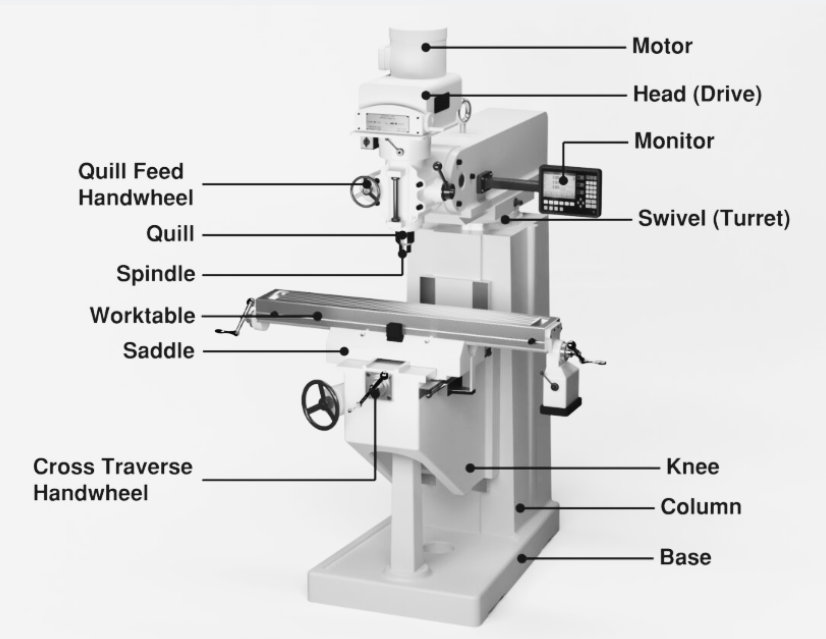
Differences Between CNC Milling Machines and CNC Routers
CNC routers and CNC mills are both computer-controlled numerical machines, but with different purposes, designs, and applications. Here, let’s take a quick look at the differences between milling machines and routers.
| Difference | CNC Milling Machine | CNC Router |
|---|---|---|
| Material Compatibility | Hard materials (steel, titanium, aluminum, composites) and soft materials | Primarily soft materials (wood, plastics, foam, aluminum) |
| Rigidity & Build | Heavy, rigid, stable for high cutting forces | Lighter, less rigid, often portable |
| Power | Higher | Lower |
| Tooling | Diverse tooling: end mills, drills, specialized metal tools | Router bits for shaping, cutting, engraving soft materials |
| Precision & Tolerances | High precision, tight tolerances, complex geometries | Less precise, suitable for general shaping and engraving |
| Number of Axes | Up to 12 axes for complex machining | Typically 3 axes, sometimes up to 5 |
| Worktable Size | Generally smaller worktables | Larger worktables for bigger workpieces |
| Typical Applications | Aerospace, automotive, medical, metal prototyping | Woodworking, sign-making, cabinetry, soft material carving |
| Software Complexity | Advanced software, complex programming languages | Easier-to-use software with graphical interfaces |
| Cost | More expensive, heavy-duty industrial machines | More affordable, hobbyist and small business-friendly |
| Cutting Depth and Width | Smaller cut width/depth due to rigidity and precision | Larger cut width and depth |
| Speed of Cutting | Slower due to material hardness and precision | Faster due to softer materials |
CNC Mill and CNC Router: Which One to Choose?
Choose a CNC Mill When:
- You need high precision and tight tolerances on parts.
- You are machining hard materials like steel, titanium, stainless steel, or cast iron.
- Your projects involve complex geometries and intricate detailing.
- You require rigid construction to minimize vibration and ensure accuracy.
- You are producing mechanical parts, fixtures, tooling, or prototypes requiring excellent surface finish.
- Your machining involves low to moderate workpiece size (smaller worktables).
- You want to work with advanced CAM software for complex toolpaths.
- You need lower spindle speeds with higher torque for controlled metal cutting.
- Your application demands multiple-axis machining.
Choose a CNC Router When:
- You work primarily with soft materials such as wood, plastics, foam, and soft metals (like aluminum).
- You need to handle large-format workpieces or full sheets (e.g., 2×4 foot panels).
- Your priority is fast cutting speeds and rapid production for less complex shapes.
- You require a lighter, more portable machine.
- You are in industries like woodworking, sign-making, cabinetry, or rapid prototyping.
- You prefer simpler, user-friendly software with graphical interfaces.
- Your work requires larger cut width and depth but less precision.
- You want to quickly produce carvings, engravings, or decorative cuts on soft materials.
- Your projects benefit from a gantry-style machine with a stationary workpiece.
Choose Both CNC Mill and CNC Router When:
- You want maximum versatility to machine a broad range of materials, from soft woods to hard metals.
- Your workflow includes both large-format sheet cutting and precise metal part fabrication.
- You aim to increase shop efficiency by running simultaneous tasks on different machines.
- You need to prototype and produce parts across multiple industries or applications.
- You want to combine fast, large-scale routing with high-precision milling for complex assemblies.
- Your business or workshop requires flexibility to handle diverse project sizes and complexities.
- You want to leverage different software tools and workflows optimized for each machine type.
- You have the budget and space to accommodate both machines.


